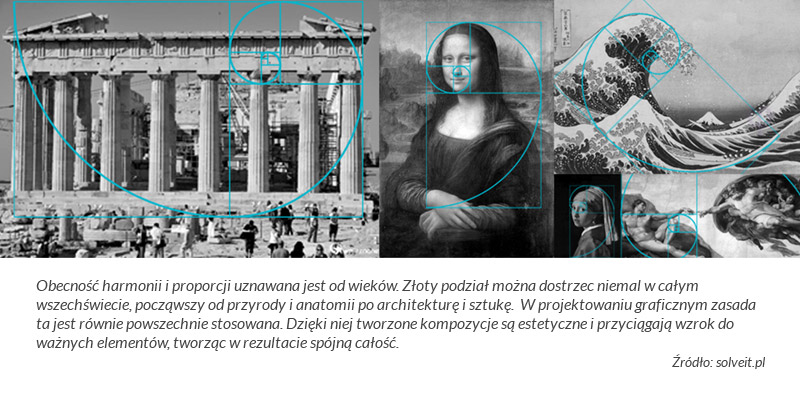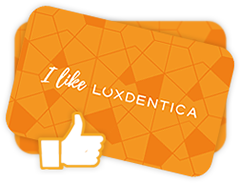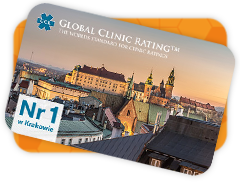Kraków: Lubostroń 22G lok. 7, +48 12 44 55 665 | Lipska 4 lok. 10, +48 731 704 731 | Wrocławska 53A, +48 731 704 787
It's estimated that up to half of all patients visit a dentist for aesthetic reasons. Beautiful and straight teeth not only enhance appearance but also break psychological barriers, improve quality of life, boost self-confidence, and make us perceived as attractive and capable individuals.
When teeth are healthy but have discolorations, are uneven, too long or short, asymmetrical, have microcracks or minor fractures, it's worth considering modifying this condition. This is a task for a dentist. A good dentist, specializing in aesthetic dentistry, can effectively and professionally enhance the appearance of any teeth. There are numerous methods for visual smile transformations. Veneers, composite fillings, crown overlays (Inlay or Onlay) can be used. You can also take advantage of the modern method called Digital Smile Design, which step by step designs a new, desired beautiful smile.
It is present in nature, in the greatest artistic works, mathematics, but also in the harmony of the human body – including teeth and faces. Modern techniques for designing a new smile directly refer to the principle of the golden ratio - the divine proportion. Aesthetic dentistry requires innovation, creativity, and artistic skills in order to create a perfect smile tailored to the individual and unique facial conditions. Beauty can be measured. Therefore, modern methods of planning a new smile, such as DSD, utilize the principle that was discovered in antiquity.
In short, the golden ratio, also known as the divine proportion, Fibonacci sequence, or Phi letter, perfectly describes a symmetrical relationship between two proportions. It involves dividing any segment into two parts so that the whole is to the larger part as the larger part is to the smaller part. Such an image can be multiplied to create complex mathematical, geometric, or spatial structures. Some of the most well-known objects that utilize the golden ratio principle include the Greek Parthenon, the Mona Lisa, and Michelangelo's fresco, The Creation of Adam.

The diagnostic and treatment planning system employs an algorithm that analyzes the digital image to determine the optimal positioning of all teeth in the jaw for smile design. Modern dentistry individually defines for each patient their own unique proportion, approaching the ideal.
Digital Smile Design is a method that provides a dentist with the ability to conduct fully predictable prosthetic, orthodontic, or conservative treatment using composite materials to achieve the best aesthetic result. DSD offers the patient a vision of treatment outcomes right from the moment of designing a new smile. The DSD process is based on three important pillars: aesthetic diagnostics, communication between the patient/dentist/prosthetic technician, and continuous information verification.
Aesthetic diagnostics - it is medical documentation in the form of photographs and digital analysis. It enables dentists to visualize and analyze problems that cannot be clinically observed.
Communication - it holds fundamental significance throughout the entire process. The goal is to accurately inform the prosthetic technician about the patient's personal preferences and psychophysical traits. The patient actively participates in creating the new smile, becoming a co-creator and creator of their new teeth by expressing their expectations and desires. Proper communication directly influences the establishment of an optimal relationship between the patient, dentist, and prosthetic technician.
The DSD analysis allows for a precise evaluation of the results obtained during the design and treatment phases. The treatment plan based on a sequence of slides is closely correlated with photos, videos, notes, graphics, or drawings. At any time, members of the entire team can access the slide presentation to keep track and analyze the material in real-time. The dental technician gains feedback related to tooth shape, positioning, and color to optimize the process and make any necessary adjustments. This ongoing dual control between the dentist and technician greatly contributes to the excellence of the final result.
You will learn more about this in the section → Digital Smile Design.
Therefore, we meticulously plan all procedures using modern computer technology. The driving force behind our actions is always the desire to make changes to improve the current dental condition. To fully understand the expectations, we conduct consultations where we discuss implementation methods in detail, choosing the most suitable methods for the patient. We determine what we can achieve together and what the patient wants. At the same time, we plan the treatment to minimize interference with the patient's healthy teeth as much as possible.
Groundbreaking dental technology reminiscent of the most demanding neurosurgical procedures. It's like comparing GPS navigation to the paper maps that were once used.
moreWe smile every day

We have prepared a special program just for you, appreciating our loyal customers.
World-class Dentistry

Luxdentica, the best dental clinic in Krakow.











